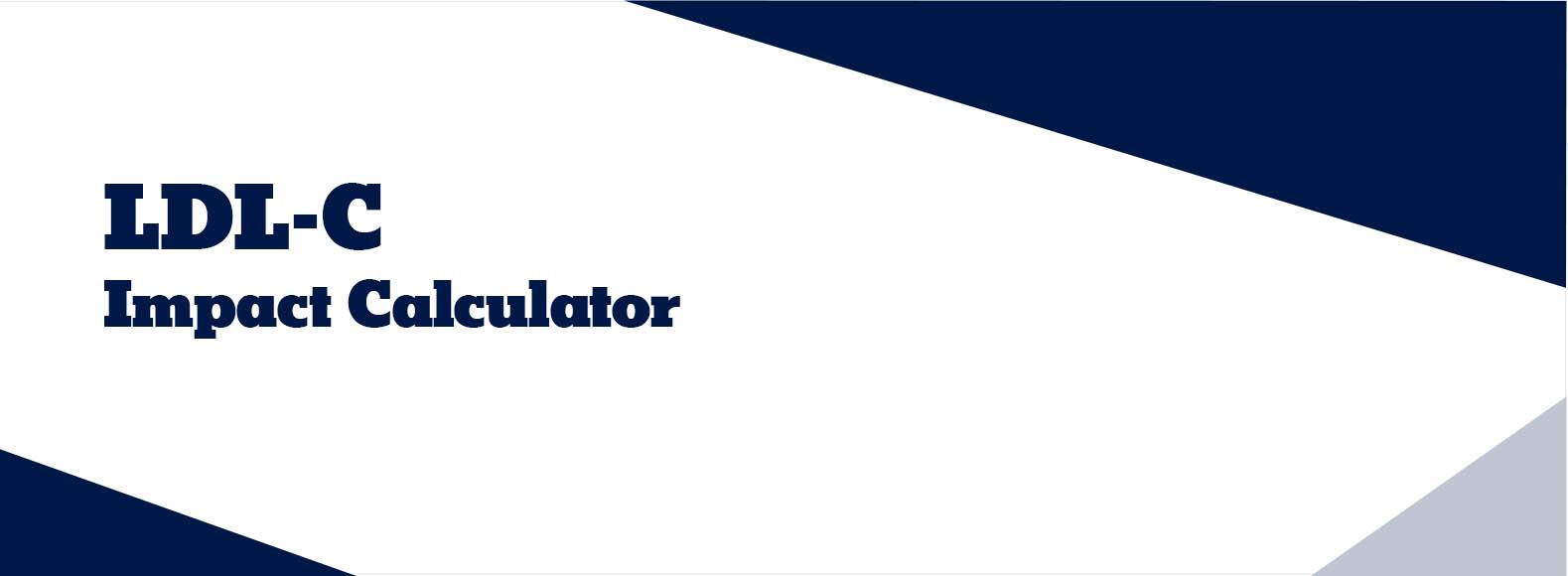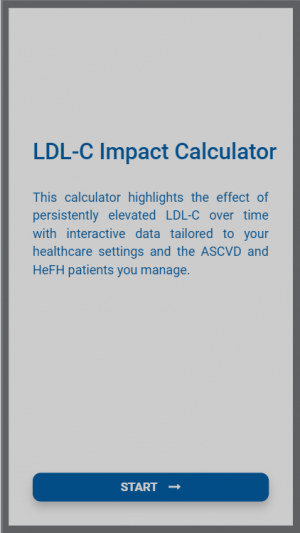How many lives could you save in your own practice through effective and sustained LDL-C reduction?
A broad evidence base over the last 50 years has demonstrated that consistent and sustained reductions of LDL-C are associated with reductions in major adverse CV events (MACE) and CV death.1-3 This is further reinforced by international clinical treatment guidelines.4-5
The LDL-C impact calculator has been developed to support healthcare professionals (HCPs) connect this data with the potential impact of reducing LDL-C over a sustained period of time in your own patients/populations, demonstrating how many lives could be saved, along with how many CV events could be avoided, with effective and sustained LDL-C reduction in your own healthcare setting.

The calculator is a computer-based simulation, which requires the following input values: |
|
|
The number of patients with atherosclerotic cardiovascular disease (ASCVD) and/or the number of primary prevention patients with HeFH, managed in a specific healthcare setting (e.g. your own practice) and their average LDL-C
|
|
|
How many of those patients are believed to be below LDL-C guideline targets
Research has shown that up to 80% of ASCVD patients have LDL-C levels >70 mg/dL6 |
|
|
An estimated LDL-C reduction for those patients
|
|
Please note that for the default LDL-C reduction values for ASCVD and HeFH, inclisiran has been used as an example, with values of 52%7 and 48%8 respectively. This estimate is based on Inclisiran LDL-C reduction in ORION-10 and ORION-9 in the target population. Note that these default values have been used as an example and may be modified in the input tab.
|
|

The LDL-C impact calculator provides you with a computer generated forecast of: |
|
|
The potential lives saved with effective and sustained LDL-C reduction over 10 years (or the relevant time frame) in your own practice
|
|
|
The MACE avoided and decrease in MI/strokes by effective and sustained LDL-C reduction over 10 years (or the relevant time frame) in your own practice
|
|
Please note that the data and the figures are intended to act as a guide only and do not necessarily represent actual practice. The outputs generated by the tool should be considered as computer-generated forecast guidance only. Please refer to the methodology tab for further information on the computer-generated forecast. |
|
Please use below credentials to login:
Username: [email protected] Password: hcpbasecase@2021
References:
-
Cholesterol Treatment Trialists’ (CTT) Collaboration. Efficacy and safety of LDL-lowering therapy among men and women: meta-analysis of individual data from174,000 participants in 27 randomised trials. Lancet. 2015;385(9976):1397-1405. Lancet. 2015;385(9976):1397-1405.
-
Ference BA, Ginsberg HN, Graham I, et al. Low-density lipoproteins cause atherosclerotic cardiovascular disease. 1. Evidence from genetic, epidemiologic, and clinical studies. A consensus statement from the European Atherosclerosis Society Consensus Panel. Eur Heart J. 2017;38(32):2459-2472.
-
Silverman MG, Ference BA, Im K, et al. Association between lowering LDL-C and cardiovascular risk reduction among different therapeutic interventions: a systematic review and meta-analysis. JAMA. 2016;316(12):1289–1297. doi:10.1001/jama.2016.13985.
-
Mach F, Baigent C, Catapano Al, et al. 2019 ESC/EAS Guidelines for the management of dyslipidaemias: lipid modification to reduce cardiovascular risk. Eur Heart J. 2020;411(1):111-188
-
Grundy SM, Stone NJ, Bailey AL, et al. 2018 AHA/ACC/AACVPR/AAPA/ABC/ACPM/ADA/AGS/APhA/ASPC/NLA/PCNA guideline on the management of blood cholesterol: a report of the American College of Cardiology/American Heart Association Task Force on Clinical Practice Guidelines. J Am Coll Cardiol.2019;139(25):e1082-e1143.
-
Cannon C, Khan I, Klimchak A, Reynolds M, Sanchez R, Sasiela W. Simulation of Lipid-Lowering Therapy Intensification in a Population With Atherosclerotic Cardiovascular Disease. JAMA Cardiol. 2017;2(9):959-966. doi:10.1001/jamacardio.2017.2289
-
Ray KK, Wright RS, Kallend D, et al.; ORION-9 Investigators. Two phase 3 trials of inclisiran in patients with elevated LDL cholesterol. N Engl J Med. 2020;382(16):1507-1519.
-
Raal FJ, Kallend D, Ray KK, et al; ORION-10 and ORION-11 Investigators. lnclisiran for the treatment of heterozygous familial hypercholesterolemia. N Engl J Med. 2020;382(16):1520-1530.
Rate this content:

